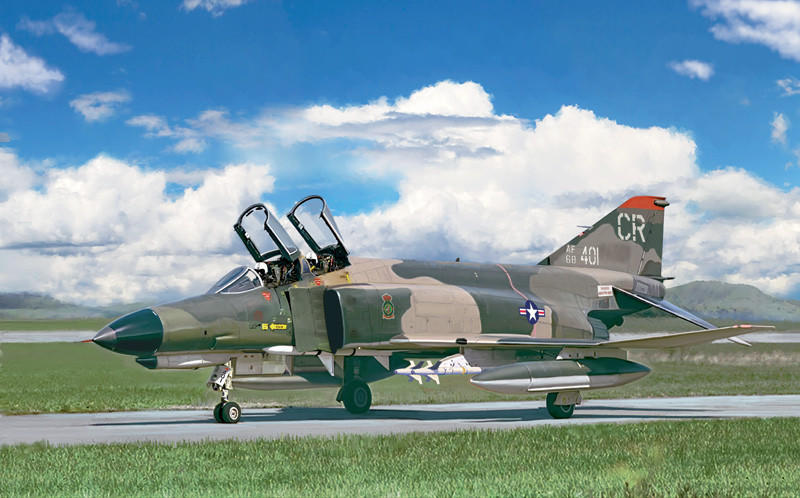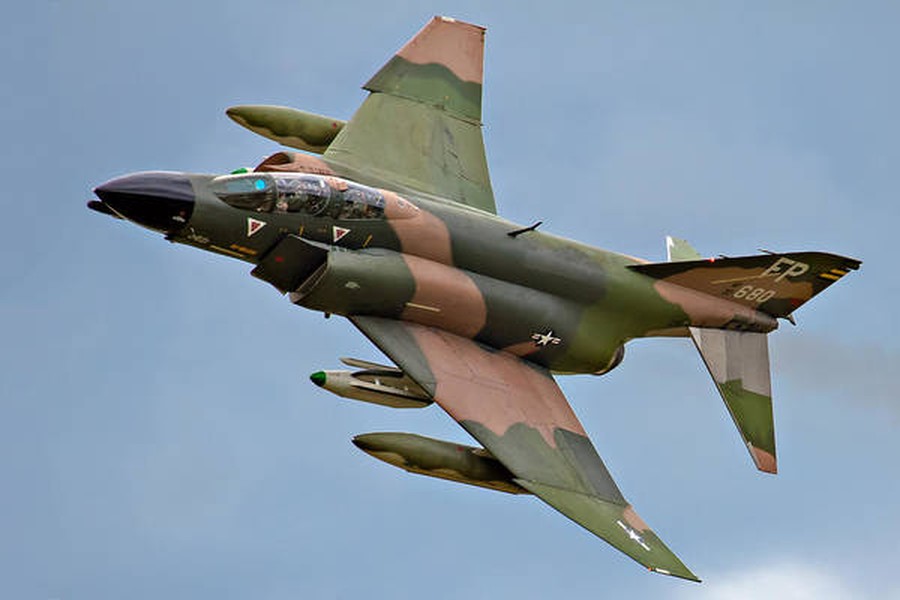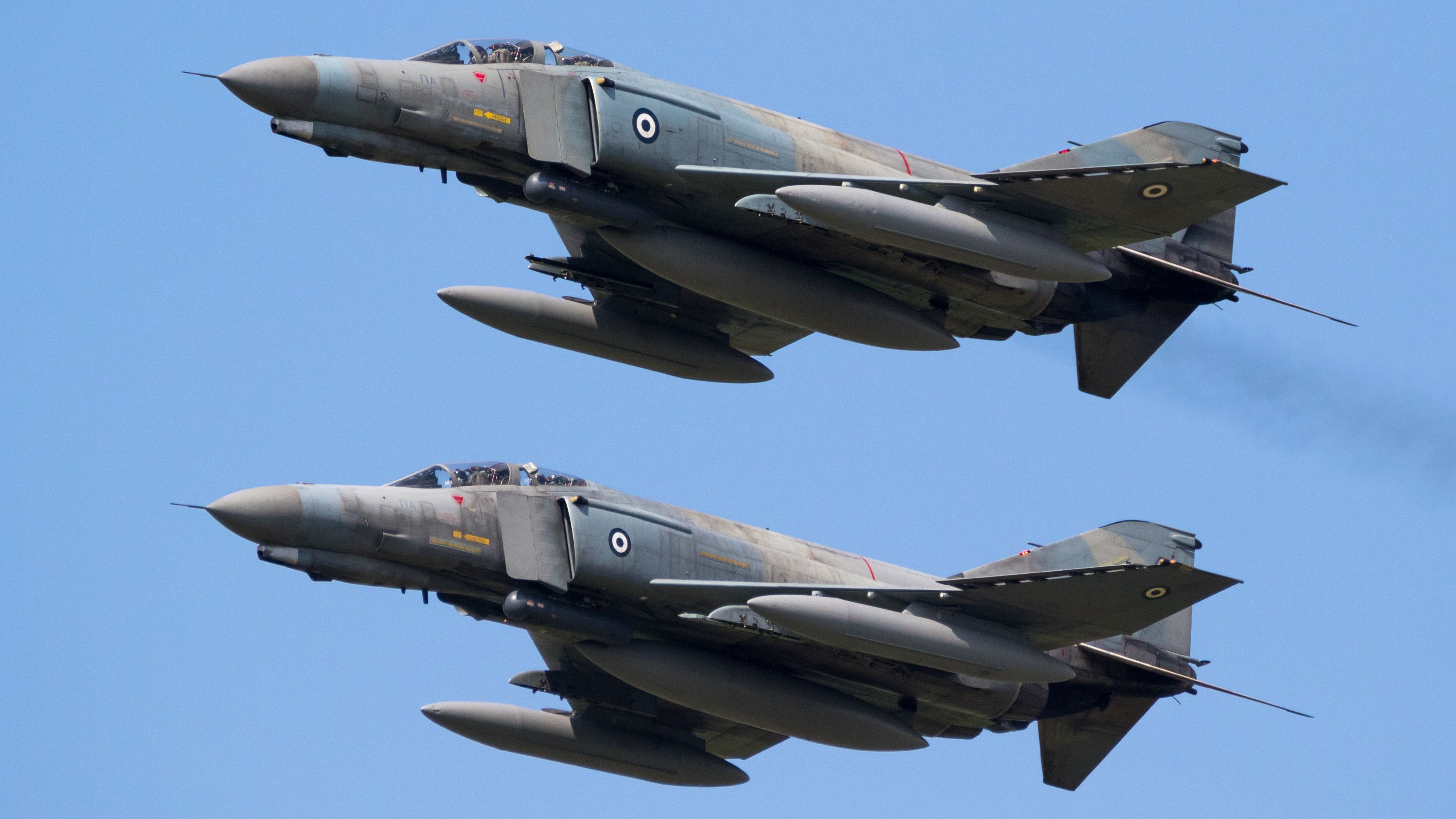The F-4 Phantom II, one of the most iconic fighters of the Cold War era, is often remembered for its powerful engines, advanced radar systems, and remarkable versatility in both air-to-air and air-to-ground combat. However, the story of the F-4E, a later variant of this legendary aircraft, is also one of overcoming a critical flaw that threatened to undermine its place in American military aviation. Known for its speed and firepower, the Phantom faced a surprising issue early in its service life: it had a tendency to fall apart in the sky.

A Fighter on the Brink
The F-4 Phantom II was initially developed by McDonnell Aircraft Corporation in the late 1950s as a carrier-based interceptor for the U.S. Navy. It quickly became a mainstay in the U.S. Air Force, Navy, and Marine Corps, renowned for its impressive performance at supersonic speeds and its ability to carry a wide array of weapons. However, as the Vietnam War intensified in the 1960s, the Phantom began to reveal some troubling weaknesses.
The early variants of the F-4 Phantom II were designed with the idea that missiles would replace guns as the primary weapon in aerial combat. As a result, the initial Phantoms were built without an internal cannon, relying solely on missiles. However, in the fast-paced dogfights over Vietnam, this decision proved problematic. Missiles often failed to hit their targets, and without a cannon, the Phantom was at a disadvantage in close-range engagements.
But the more alarming issue was structural: some Phantoms began to suffer catastrophic failures in flight. Pilots reported that parts of the aircraft, including the tail, would break off during high-speed maneuvers or when subjected to intense combat stress. These incidents raised serious concerns about the Phantom’s airworthiness and the safety of its pilots.

The F-4E: A Necessary Evolution
Faced with these critical issues, the U.S. Air Force and McDonnell set to work on developing a new variant of the Phantom that could address its shortcomings. The result was the F-4E Phantom II, introduced in 1967, which became the most advanced and widely produced version of the aircraft.
One of the most significant improvements in the F-4E was the addition of an internal M61 Vulcan 20mm rotary cannon. This six-barrel Gatling gun gave the Phantom a reliable close-combat weapon, ensuring that it could defend itself in dogfights when missiles failed. The cannon’s high rate of fire and devastating power restored the Phantom’s edge in aerial combat.
Equally important were the structural modifications made to the F-4E. Engineers reinforced the airframe, particularly in the tail section, to prevent the kind of in-flight failures that had plagued earlier models. These reinforcements made the F-4E more robust and capable of withstanding the high stresses of air combat, allowing pilots to push the aircraft to its limits without fear of catastrophic failure.
The F-4E also featured improved avionics and radar systems, which enhanced its ability to detect and engage enemy aircraft at greater distances. The upgraded radar allowed the Phantom to track multiple targets simultaneously, making it more effective in both air-to-air and air-to-ground missions.

A Fighter Redeemed
The introduction of the F-4E marked a turning point for the Phantom program. With its enhanced structural integrity, new cannon, and improved avionics, the F-4E addressed the shortcomings of its predecessors and restored confidence in the aircraft. It became the definitive version of the Phantom, serving with distinction in the latter years of the Vietnam War and in various conflicts around the world.
The F-4E’s success demonstrated the importance of adaptability and innovation in military aviation. Rather than abandoning the Phantom in the face of its early problems, the U.S. Air Force and McDonnell worked to correct its flaws and build a better fighter. The F-4E’s evolution from a troubled aircraft into a reliable workhorse is a testament to the resilience of the American military-industrial complex and its ability to overcome setbacks.

Legacy of the F-4E
The F-4E Phantom II went on to become one of the most widely used fighters in the world, serving not only with the U.S. military but also with the air forces of over a dozen other nations. Its combination of speed, firepower, and versatility made it a formidable opponent in any theater of operations.
Even today, the F-4E remains in limited service in some countries, a testament to its enduring design and capabilities. While more modern aircraft have long since replaced the Phantom in front-line service, the lessons learned from its development continue to influence the design of new fighters.
The story of the F-4E Phantom II is one of redemption—an aircraft that, despite its early failures, became a symbol of American airpower and a reminder that even the most advanced technology requires constant refinement and adaptation to meet the challenges of warfare.





